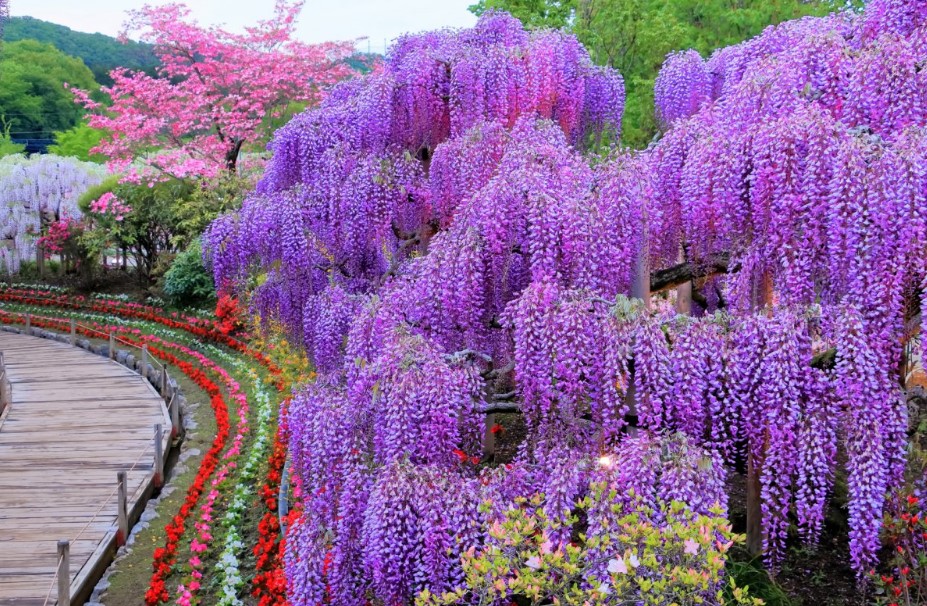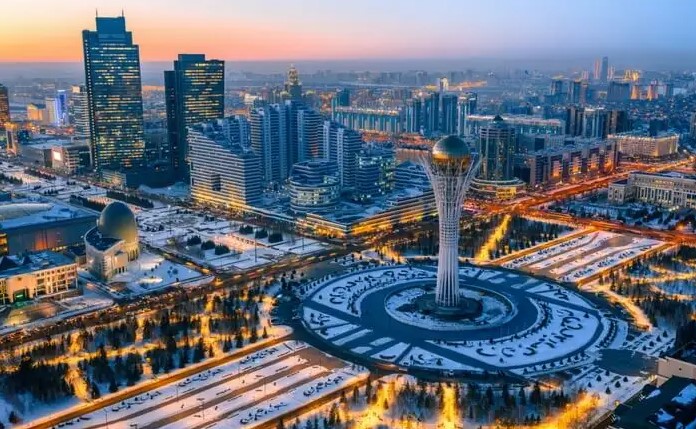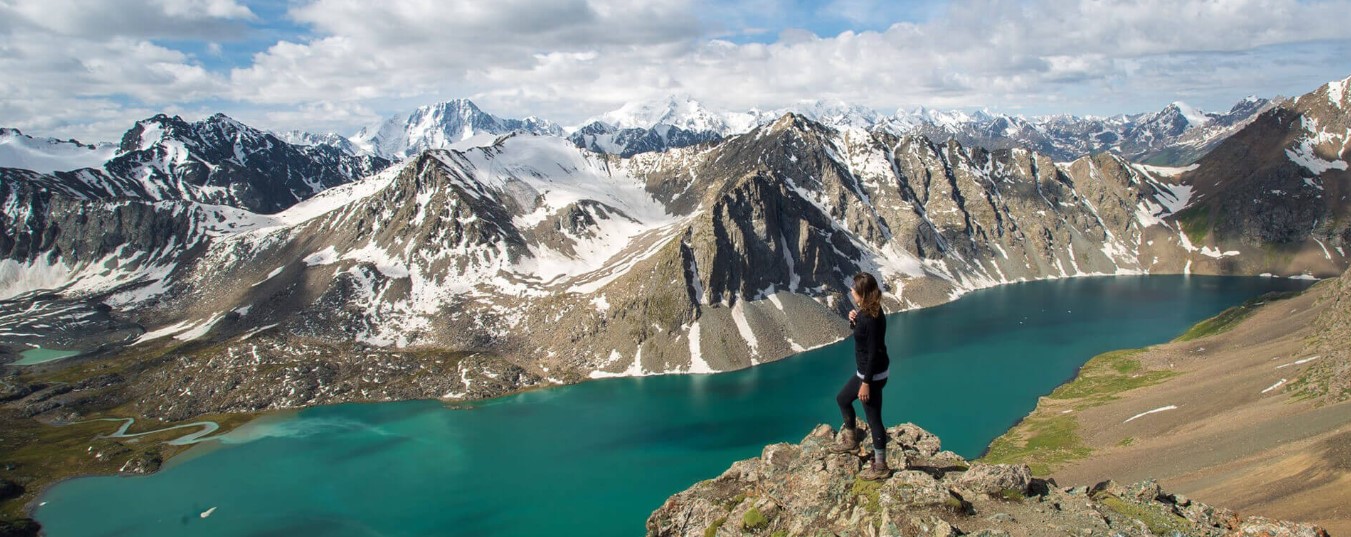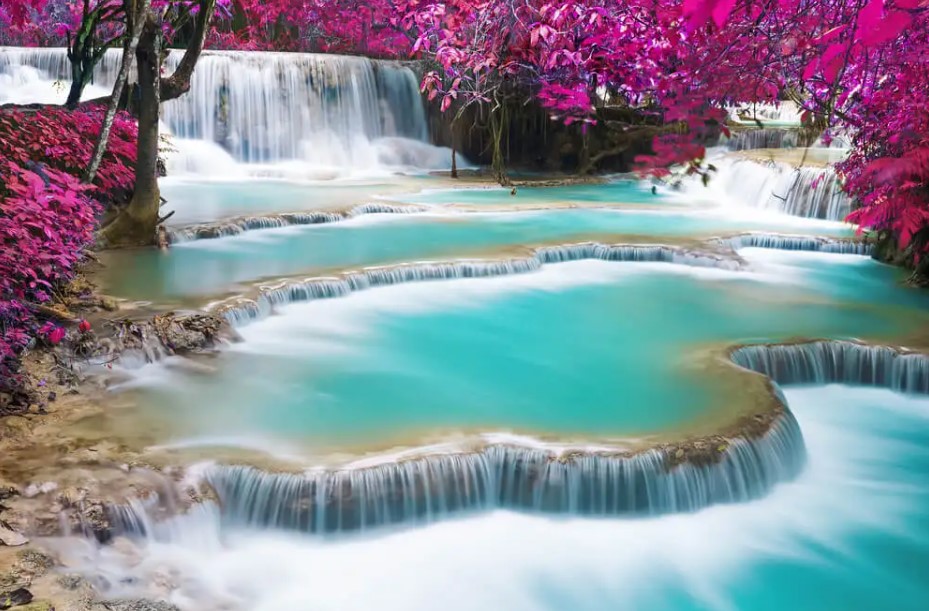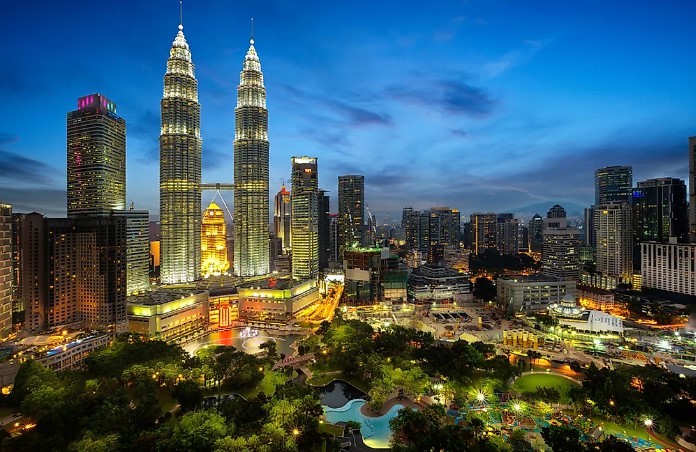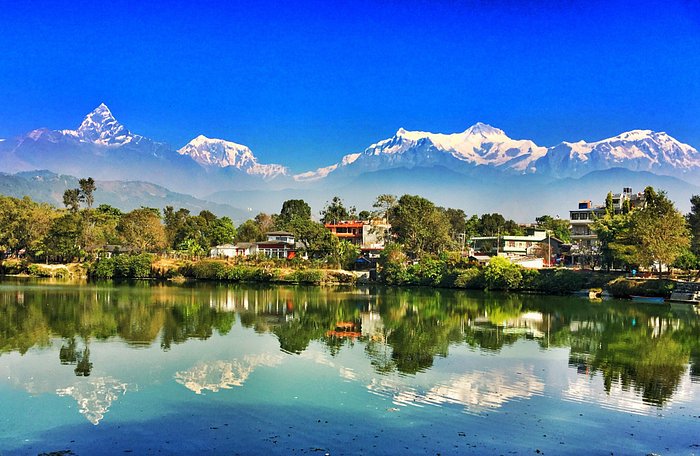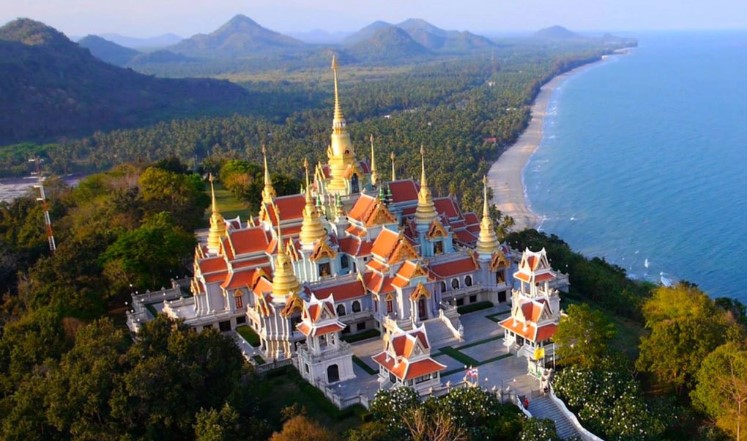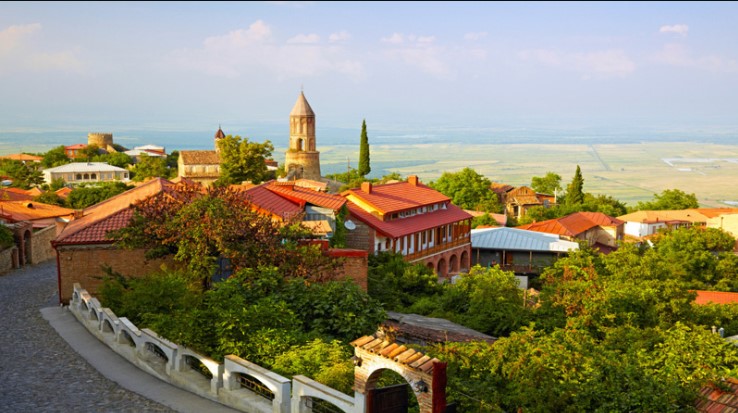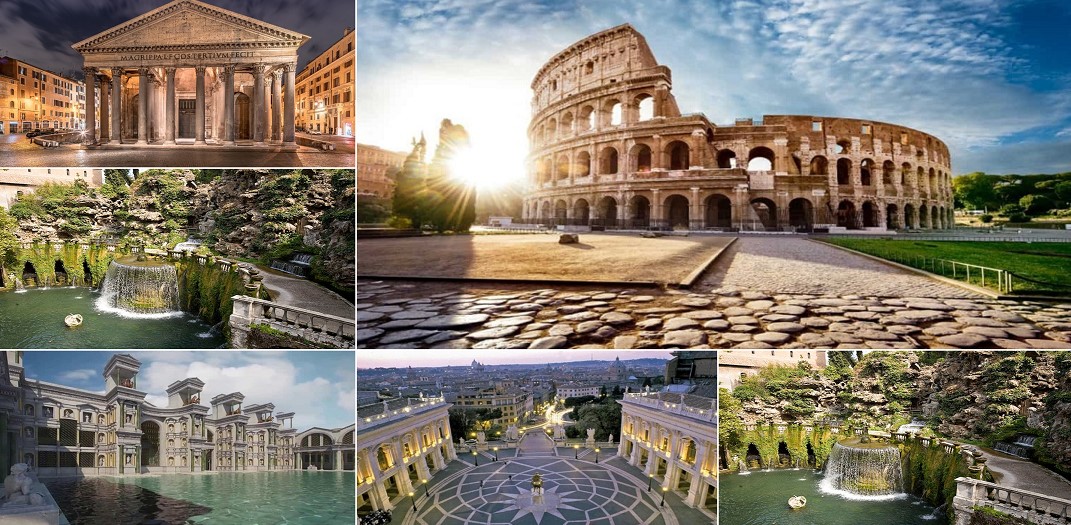Unveiling Peru's Hidden Gems: Best Places to Visit in Peru, Tourist Places & Attractions
Discover the 25 best places to visit in Peru, including iconic tourist attractions. Immerse yourself in the beauty and culture of this South American gem. Peru, a captivating South American country known for its rich history, diverse culture, and breathtaking landscapes, offers travelers an array of remarkable destinations to explore.
From ancient ruins to lush jungles, Peru is a treasure trove of adventure and discovery. In this article, we'll take you on a virtual journey through the 25 best places to visit in Peru, highlighting the most captivating tourist attractions that make this country a must-visit destination.
Embarking on a Journey Through Peru's Top Attractions
Peru is a land of contrasts, where modernity meets tradition and natural beauty intertwines with historic treasures. Whether you're an avid history buff, a nature enthusiast, or someone seeking unforgettable experiences, Peru has something to offer. Below, we've compiled a list of the 25 best places to visit in Peru, each with its unique charm and significance.
25 Best Places to Visit in Peru, Tourist Places & Attractions
01. Machu Picchu: The Iconic Incan Citadel
Machu Picchu, the iconic Incan citadel, stands as a testament to the ancient civilization's architectural prowess and cultural significance. Perched high in the Andes Mountains of Peru, this breathtaking archaeological wonder has captured the world's imagination for centuries. With its name translating to "Old Peak" in Quechua, Machu Picchu is an awe-inspiring masterpiece of ancient engineering and design.
This mystical site, hidden amidst the lush greenery of the Peruvian jungle, was built during the 15th century at the peak of the Inca Empire's power. Its precise purpose remains shrouded in mystery, but many believe it served as a royal estate or religious retreat. The complex comprises intricate stone structures, terraces, and temples, all seamlessly integrated into the natural landscape. The precision with which the stones were cut and fitted together without mortar is a testament to the Inca's craftsmanship.
Visitors are drawn not only to the architectural marvels but also to the panoramic vistas that surround Machu Picchu. As the sun rises, the mist-shrouded citadel reveals itself, casting a surreal, ethereal glow. The majestic Huayna Picchu peak looms in the background, offering adventurous hikers a challenging ascent and unparalleled views.
Machu Picchu's allure extends beyond its structural beauty. Its history, with its mysterious abandonment and subsequent rediscovery by Hiram Bingham in 1911, adds an aura of intrigue. The site's designation as a UNESCO World Heritage Site and its inclusion as one of the New Seven Wonders of the World further underscore its global significance.
Visiting Machu Picchu is a journey into the heart of Incan history and an opportunity to connect with the spiritual energy that still resonates within its walls. Whether you're a history enthusiast, an adventure seeker, or a nature lover, Machu Picchu promises an unforgettable experience that will leave an indelible mark on your soul.
02. Cusco: Gateway to the Andes
Cusco, known as the "Gateway to the Andes," is a city that wears its rich history on every cobblestone street and in every ornate façade. Nestled high in the Peruvian Andes, at an altitude of 11,152 feet (3,399 meters), Cusco was once the capital of the Inca Empire and continues to be a vibrant cultural hub today.
The city's blend of Incan and Spanish colonial influences is evident everywhere you look. Marvel at the precision of Inca stonework in structures like Coricancha, the Temple of the Sun, and the impressive Sacsayhuamán fortress, which overlooks the city. Wander through the narrow streets of San Blas, the artistic district, where local artisans create beautiful handicrafts.
Cusco's central square, the Plaza de Armas, is the heart of the city. It's surrounded by picturesque colonial buildings, including the imposing Cusco Cathedral. Here, you can immerse yourself in the local culture, sipping on coca tea to combat the high altitude or trying delicious Peruvian dishes at one of the many restaurants.
Beyond its historical and architectural treasures, Cusco serves as the starting point for many adventures in the Andes. Travelers often use it as a base for exploring the Sacred Valley and making the journey to Machu Picchu. The city's proximity to stunning natural landscapes and Incan ruins makes it an ideal destination for outdoor enthusiasts.
Cusco is not just a destination; it's an experience that offers a glimpse into the grandeur of the Inca Empire and the enduring spirit of the Andean people. Whether you're an adventurer, a history buff, or simply seeking a unique cultural experience, Cusco welcomes you with open arms.
03. Lima: The Culinary Capital
Lima, the sprawling capital of Peru, is a city where the past and present coexist in a vibrant tapestry of culture, history, and, most notably, cuisine. Known as the "Culinary Capital of South America," Lima offers an irresistible fusion of flavors, where ancient traditions meet modern gastronomy.
Peruvian cuisine is a harmonious blend of indigenous ingredients, Spanish influences, and global culinary trends. In Lima, this culinary artistry reaches its zenith. Stroll through the historic district of Barranco or the upscale neighborhood of Miraflores, and you'll find a treasure trove of restaurants, cafes, and food markets serving up exquisite dishes.
One cannot visit Lima without savoring ceviche, the national dish made from fresh seafood marinated in zesty lime juice. Another culinary delight is Lomo Saltado, a stir-fry of beef, onions, and tomatoes, infused with Peruvian spices. Adventurous eaters can try anticuchos (grilled skewers) or the earthy flavors of ají de gallina (chicken in spicy cream sauce).
Lima's gastronomic scene is a reflection of its diverse culture. The city boasts an array of eateries that range from street food stalls to award-winning fine dining establishments. The vibrant food markets, like Surquillo Market, are a microcosm of Peru's agricultural bounty, offering exotic fruits, colorful vegetables, and a variety of spices.
In addition to its culinary delights, Lima boasts a rich historical heritage. Explore the historic center to discover colonial-era churches, grand plazas, and the imposing Government Palace. The Larco Museum, housing a remarkable collection of pre-Columbian art, is a must-visit for history enthusiasts.
Lima's unique blend of flavors, history, and modernity makes it a destination that tickles all the senses. Whether you're a foodie seeking new culinary adventures or a traveler intrigued by the intersection of tradition and innovation, Lima promises a memorable experience.
04. Arequipa: The White City
Arequipa, known as "The White City" due to its striking architecture crafted from white volcanic sillar stone, is a hidden gem in the Peruvian Andes. Nestled at the foot of the imposing Misti Volcano, this city is a captivating blend of colonial charm, natural beauty, and rich history.
The heart of Arequipa is the Plaza de Armas, surrounded by magnificent colonial-era buildings, including the stunning Basilica Cathedral of Arequipa. Explore the Santa Catalina Monastery, a labyrinthine complex of cloisters and courtyards that was once closed off to the outside world, allowing nuns to live in seclusion.
The city's culinary scene is a delightful surprise for food enthusiasts. Savor local specialties like rocoto relleno (stuffed hot peppers), adobo (marinated pork), and the beloved alpaca steak. Arequipa's cuisine is known for its bold flavors and creative use of regional ingredients.
For those seeking outdoor adventures, the surrounding landscape offers endless possibilities. Hike to the base camp of Misti Volcano for panoramic views, or visit the breathtaking Colca Canyon, one of the world's deepest canyons, to spot Andean condors soaring above.
Arequipa's unique blend of architectural beauty, cultural richness, and natural wonders makes it a destination that appeals to history buffs, foodies, and nature lovers alike. Whether you're exploring its historic streets or embarking on an adventure in the Andes, "The White City" promises an unforgettable experience.
05. Sacred Valley: Nature's Bounty
The Sacred Valley, nestled high in the Peruvian Andes, is a place of unparalleled natural beauty and cultural significance. This lush, fertile valley stretches along the Urubamba River and serves as a gateway to the ancient wonders of the Inca Empire.
The Sacred Valley is a treasure trove of archaeological sites, including the majestic ruins of Ollantaytambo and Pisac. These Inca citadels provide a glimpse into the empire's advanced engineering and agricultural practices. Explore the terraced fields, stone temples, and intricate irrigation systems that remain remarkably intact.
The valley is also home to indigenous communities that preserve traditional ways of life. Engage with locals to learn about their weaving techniques, agricultural practices, and spiritual rituals. Visit the vibrant Pisac Market to shop for handcrafted textiles, jewelry, and pottery created by skilled artisans.
One of the highlights of the Sacred Valley is its stunning landscape. Towering peaks, lush green valleys, and meandering rivers create a backdrop of natural beauty that's perfect for hiking, horseback riding, or simply taking in the serene surroundings. Moray, an ancient agricultural experiment, features concentric terraces that are both intriguing and photogenic.
As the gateway to Machu Picchu, the Sacred Valley is a crucial stop on the journey to the iconic Incan citadel. The town of Aguas Calientes, nestled at the base of Machu Picchu, provides a convenient launching point for your visit to this archaeological marvel.
Whether you're exploring ancient ruins, immersing yourself in local culture, or admiring the awe-inspiring landscapes, the Sacred Valley offers an enriching experience that connects you to the essence of Peru's history and natural beauty.
06. Lake Titicaca: Mystical Waters
Lake Titicaca, located high in the Andes on the border of Peru and Bolivia, is a place of mystical beauty and cultural significance. Revered as the highest navigable lake in the world, it has captivated travelers for generations with its breathtaking scenery and rich heritage.
The deep azure waters of Lake Titicaca are surrounded by towering peaks, making it a surreal and ethereal setting. Explore the lake's many islands, each with its own unique charm. The Uros Islands, made entirely of floating reeds, showcase the resourcefulness of the indigenous Uros people who call them home.
One of the most iconic destinations on Lake Titicaca is Taquile Island, where you can witness the traditions of the Quechua-speaking Taquileños. Marvel at their intricate handwoven textiles and enjoy a meal of fresh lake trout prepared with local herbs and spices.
Amantani Island offers a glimpse into rural life on the lake, with opportunities to stay with local families and experience their customs and traditions. The island's hills provide panoramic views of the lake and surrounding mountains.
Lake Titicaca is also steeped in mythology, with legends of the Inca Empire's origin tracing back to the lake's sacred islands. Visit the Temple of the Virgins of the Sun on the island of Isla del Sol to explore Incan ruins and soak in the mystical atmosphere.
Beyond its cultural and natural wonders, Lake Titicaca offers tranquility and reflection. As you cruise its serene waters and watch the sun set behind the mountains, you'll understand why it's considered one of the world's most captivating and spiritually significant lakes.
Whether you're drawn to the cultural heritage, the stunning landscapes, or the sense of mystery that surrounds Lake Titicaca, a visit to this extraordinary destination promises a deep and unforgettable experience.
07. Nazca Lines: Enigmatic Geoglyphs
The Nazca Lines, located in the arid plains of southern Peru, are a mysterious and enigmatic marvel of ancient art and engineering. These immense geoglyphs, etched into the desert floor, have baffled archaeologists, historians, and visitors for decades with their intricate designs and the mystery of their purpose.
Created by the Nazca people between 500 BCE and 500 CE, these enormous drawings depict various animals, plants, and geometric shapes, some spanning hundreds of feet in length. The precision with which they were crafted, despite the limitations of ancient technology, is astounding. The Nazca Lines are best appreciated from the air, making a scenic flight over the desert an essential part of the experience.
The purpose behind these geoglyphs remains a subject of debate. Some theories suggest they had astronomical or religious significance, while others propose they served as giant water rituals or markers for underground aqueducts. Regardless of their purpose, the Nazca Lines are a testament to the ancient Nazca people's creativity and ingenuity.
Visiting the Nazca Lines offers a chance to step back in time and contemplate the mysteries of a civilization long gone. It's a journey into the heart of one of the world's most perplexing archaeological enigmas, leaving you with more questions than answers and a deep appreciation for the wonder of human achievement.
08. Amazon Rainforest: Biodiversity Haven
The Amazon Rainforest, often referred to as the "Lungs of the Earth," is a vast, lush expanse of biodiversity that sprawls across nine South American countries. This unparalleled natural wonder is home to a staggering array of plant and animal species, making it one of the most biodiverse regions on the planet.
Covering over 5.5 million square kilometers, the Amazon Rainforest contains roughly 10% of the world's known species. Jaguars, sloths, pink river dolphins, and countless bird species are just a fraction of the inhabitants you might encounter. The towering trees and dense foliage shelter an astonishing variety of flora, including medicinal plants, orchids, and towering hardwoods.
Exploring the Amazon offers an opportunity to witness nature in its purest form. Navigate the winding waterways in a traditional canoe, where the tranquil surface belies the teeming life beneath. Experience the thrill of spotting elusive wildlife on guided jungle hikes and night excursions. Stay in eco-friendly lodges deep within the rainforest to immerse yourself in the sights and sounds of this lush paradise.
The Amazon Rainforest is not only a haven for biodiversity but also a critical component of our planet's ecological balance. It plays a crucial role in regulating climate patterns and storing carbon dioxide, making its preservation essential for the well-being of the entire planet.
A visit to the Amazon is a journey into the heart of nature's abundance and a reminder of the importance of conservation. It's a place where you can witness the interconnectedness of all life on Earth and gain a profound appreciation for the intricate web of ecosystems that sustain our planet.
09. Huacachina: Desert Oasis
Huacachina, a small oasis village tucked amidst the vast sand dunes of the Peruvian desert, is a hidden gem that seems like something out of a fairy tale. This desert oasis is a place of surreal beauty and a unique destination for travelers seeking adventure and relaxation.
The picturesque lagoon at the center of Huacachina is surrounded by towering sand dunes that create a dramatic backdrop. The oasis is dotted with palm trees, providing shade and a tranquil atmosphere for visitors. Many come to relax by the lagoon's shores, enjoying the serene surroundings and the reflections of the dunes in the water.
For thrill-seekers, Huacachina offers exhilarating experiences. Sandboarding down the towering dunes is a popular activity, providing an adrenaline rush as you glide down the sandy slopes. Dune buggies also whisk you across the desert, taking you on a heart-pounding ride through the dunes.
The village itself is charming, with a handful of restaurants and accommodations offering a comfortable base for your desert adventures. At sunset, the dunes come alive with a golden glow, creating a magical ambiance that's perfect for evening strolls or a traditional Pisco Sour at a local bar.
Huacachina is a testament to the beauty and diversity of Peru's landscapes. Its unique blend of desert scenery and oasis tranquility creates an experience that's both thrilling and serene, making it a must-visit destination for travelers looking to escape the ordinary.
10. Chan Chan: Ancient Adobe City
Chan Chan, located on the northern coast of Peru, is a remarkable archaeological site that offers a glimpse into the grandeur of a once-thriving pre-Columbian civilization. This ancient adobe city, the largest in the Americas, was the capital of the Chimú Empire and stands as a testament to their architectural and artistic achievements.
Built over several centuries, Chan Chan covers an extensive area of nearly 20 square kilometers, comprising a complex network of adobe-walled palaces, temples, and courtyards. The intricate friezes, featuring stylized figures, animals, and geometric patterns, decorate the walls and reflect the Chimú's rich artistic heritage.
The Tschudi Palace is one of the most impressive structures in Chan Chan, with its labyrinthine layout and intricate carvings. As you explore the site, you'll gain insights into the social and political organization of the Chimú Empire, which once ruled this coastal region.
Despite the passage of time and the challenges of preservation, Chan Chan continues to inspire awe and fascination among visitors. Its inclusion as a UNESCO World Heritage Site underscores its importance as a cultural treasure of global significance.
A visit to Chan Chan is a journey back in time, allowing you to connect with the ingenuity and creativity of the Chimú civilization. It's a place where history comes to life, offering a deeper understanding of the rich tapestry of Peru's past.
11. Colca Canyon: A Natural Wonder
Colca Canyon, nestled in the Andes of southern Peru, is a breathtaking natural wonder that leaves visitors in awe of its sheer beauty and depth. Often touted as one of the world's deepest canyons, it's more than twice as deep as the Grand Canyon in the United States.
The canyon's rugged terrain is a testament to the raw power of nature, with towering cliffs that plunge over 3,270 meters (10,730 feet) to the riverbed below. The Colca River, meandering through the canyon, adds to the dramatic scenery, while ancient agricultural terraces cling to the canyon walls, evidence of the region's rich pre-Columbian history.
Colca Canyon is a haven for hikers and outdoor enthusiasts. The trekking trails offer a chance to explore the pristine wilderness, witness rare Andean condors in flight, and encounter remote villages where traditional Quechua culture thrives. The Cruz del Condor viewpoint is a popular spot for condor watching, offering unrivaled views of these majestic birds as they soar on thermal currents.
Beyond its natural beauty, Colca Canyon is a place of cultural significance. Villages like Chivay and Yanque showcase traditional architecture, churches, and vibrant markets where you can immerse yourself in the local culture.
A visit to Colca Canyon is an opportunity to connect with the awe-inspiring power of nature and explore the rich cultural heritage of the Andean people. It's a destination that appeals to both adventure seekers and those seeking a deeper connection with the natural world.
12. Manu National Park: Biodiversity Hotspot
Manu National Park, nestled in the remote and pristine rainforests of southeastern Peru, is a true biodiversity hotspot and one of the most ecologically diverse places on Earth. This UNESCO World Heritage-listed park encompasses a staggering variety of ecosystems, from lowland rainforests to high-altitude cloud forests, making it a paradise for wildlife enthusiasts and nature lovers.
Manu is home to an incredible array of flora and fauna, including elusive jaguars, giant river otters, tapirs, and over 800 species of birds. It's also renowned for its vibrant plant life, with thousands of plant species, many of which have yet to be fully documented.
Visiting Manu National Park offers a chance to immerse yourself in the heart of the Amazon rainforest, where you can explore pristine wilderness, encounter unique wildlife, and witness the delicate balance of nature. Guided tours provide opportunities for jungle hikes, wildlife watching, and even canopy walks high above the forest floor.
One of the highlights of Manu is the Manu River, which flows through the park and provides access to some of the most remote and biodiverse areas. Exploring the river by boat allows you to navigate through various habitats and provides excellent opportunities for wildlife sightings.
As you venture deeper into Manu National Park, you'll gain a profound appreciation for the importance of conservation and the delicate ecosystems that make this region so exceptional. It's a journey that not only offers incredible natural beauty but also fosters a deeper understanding of the interconnectedness of all life on Earth.
13. Paracas National Reserve: Coastal Beauty
Paracas National Reserve, located on the arid coast of southern Peru, is a coastal paradise that boasts some of the country's most stunning natural landscapes. This protected area is a testament to the striking contrast between the harsh desert and the vibrant marine ecosystem that thrives along its shores.
The reserve's dramatic coastline features towering cliffs, natural arches, and secluded beaches with pristine golden sands. One of the most iconic spots is the Cathedral, a towering rock formation sculpted by centuries of wind and sea erosion. It's a photographer's dream, offering breathtaking views of the Pacific Ocean.
Paracas is not just a desert landscape; it's also a vital marine sanctuary. The nutrient-rich Humboldt Current creates a thriving marine ecosystem, making it one of the best places for birdwatching and wildlife observation. The Ballestas Islands, often referred to as the "Poor Man's Galapagos," are home to vast colonies of sea lions, penguins, and a variety of seabirds.
The reserve's unique combination of desert and marine environments offers numerous outdoor activities. Explore the reserve on guided tours, hike along the coastal trails, or embark on a boat tour to the Ballestas Islands for an up-close encounter with its fascinating inhabitants.
Paracas National Reserve is a place of natural beauty and ecological significance, providing a refuge for diverse wildlife and offering visitors a chance to connect with the natural world. Whether you're seeking adventure, relaxation, or a deeper appreciation for the wonders of coastal Peru, Paracas delivers an unforgettable experience.
14. Huaraz: Adventure Basecamp
Huaraz, nestled in the heart of the Cordillera Blanca mountain range in Peru, is an adventure enthusiast's dream and a basecamp for exploring some of the most breathtaking natural landscapes in the Andes. This charming city serves as a gateway to a world of outdoor activities, making it a must-visit destination for those seeking adrenaline-pumping adventures and awe-inspiring scenery.
The Cordillera Blanca, with its towering peaks, glaciers, and turquoise alpine lakes, is a trekking and mountaineering paradise. Hikers can embark on journeys that range from leisurely day hikes to challenging multi-day treks that take them deep into the Andean wilderness. Popular routes include the Santa Cruz Trek and the Huayhuash Circuit, both offering stunning vistas and opportunities to encounter local Quechua communities.
For climbers, Huaraz offers access to some of the highest peaks in the Americas, including Huascaran, Peru's tallest mountain. Climbers from around the world come here to test their skills on these majestic summits.
Mountain biking, white-water rafting, and paragliding are also popular activities in the region. The rugged terrain and varied ecosystems create a dynamic playground for outdoor enthusiasts of all levels.
Huaraz itself is a charming city with a laid-back atmosphere and a thriving artisan scene. After a day of adventure, relax in the city's hot springs or indulge in local Peruvian cuisine at one of the many restaurants and cafes.
Huaraz is more than just a basecamp; it's a destination that allows you to connect with the raw beauty of the Andes and push the boundaries of your own adventure spirit.
15. Iquitos: Amazonian Urban Gateway
Iquitos, located in the heart of the Peruvian Amazon, is a city unlike any other. Surrounded by impenetrable rainforest and accessible only by boat or plane, Iquitos is a bustling urban center in the midst of the world's largest tropical rainforest, making it a unique and captivating destination.
Known as the "Gateway to the Amazon," Iquitos offers visitors a chance to experience the unparalleled biodiversity and cultural richness of the Amazon rainforest. The city itself is a lively hub with colorful markets, vibrant street life, and a unique blend of Amazonian and colonial architecture.
One of the main attractions is the nearby Pacaya Samiria National Reserve, a vast protected area teeming with wildlife, including pink dolphins, jaguars, and countless bird species. Guided boat tours through the waterways of this pristine jungle allow you to witness the Amazon's natural wonders up close.
Iquitos is also a place to connect with indigenous communities, such as the Yagua and Bora tribes, who have inhabited the region for centuries. Visitors can learn about traditional customs, crafts, and shamanic practices that are deeply rooted in the Amazonian way of life.
Don't miss the opportunity to visit the Amazon River itself, a lifeline of the rainforest. You can take boat trips along the river, explore remote villages, and even fish for piranhas.
For a unique urban experience in the heart of the jungle, Iquitos offers adventure, culture, and a deep connection with the Amazon that you won't find anywhere else.
16. Ollantaytambo: Living Inca Town
Ollantaytambo, often referred to as Ollanta, is a picturesque town in the Sacred Valley of Peru that offers a unique window into Inca history and culture. This charming town, with its well-preserved Inca architecture and cobblestone streets, is like stepping back in time to the days of the Inca Empire.
At the heart of Ollantaytambo lies the magnificent Inca archaeological complex, a sprawling complex of terraces, temples, and stone structures. The massive stone blocks used in its construction are a testament to the Inca's advanced engineering skills. The site is not only historically significant but also offers panoramic views of the surrounding valley.
Ollantaytambo is not just a relic of the past; it's a living Inca town. The local population, largely Quechua-speaking, still maintains many of the traditional customs and agricultural practices of their ancestors. Visitors can explore the bustling market, interact with locals, and learn about the ancient textile techniques that have been passed down through generations.
The town is also a starting point for those embarking on the Inca Trail to Machu Picchu, adding to its importance as a gateway to one of the world's most iconic archaeological sites.
Surrounded by dramatic mountain scenery, Ollantaytambo offers hiking opportunities, such as the hike to the Pinkuylluna ruins, which provides breathtaking views of the town and its surroundings.
Ollantaytambo is a place where history and culture converge, making it an essential stop for travelers seeking a deeper understanding of Peru's rich heritage.
17. Maras Salt Mines: Salt Pans of the Andes
The Maras Salt Mines, located in the Sacred Valley of Peru, are a mesmerizing and ancient marvel of salt production that dates back to pre-Inca times. These intricate terraced salt pans, carved into the mountainside, create a striking mosaic of white against the rich red soil of the Andes.
The process of salt extraction at Maras is a traditional one that has been passed down through generations. Saltwater from a natural spring flows down a network of channels into the terraced pans. As the water evaporates, it leaves behind the salt, which is then harvested by local families.
Visiting the Maras Salt Mines allows you to witness this time-honored practice in action and interact with the local salt farmers who maintain these pans with care and precision. The sight of thousands of individual salt pools cascading down the hillside is both visually stunning and a testament to the ingenuity of the people who have made this their way of life for centuries.
The Maras Salt Mines are not only a fascinating historical and cultural site but also a photographer's dream, especially during the dry season when the pans are at their most vibrant and striking.
The surrounding landscape of the Sacred Valley adds to the allure of Maras, with its majestic mountains and fertile agricultural terraces. It's a place where nature, tradition, and craftsmanship converge, offering a unique and enriching experience for visitors.
18. Trujillo: Colonial Splendor
Trujillo, located on the northern coast of Peru, is a city that exudes colonial splendor and is a treasure trove of architectural and cultural heritage. Founded in 1534 by Spanish conquistador Francisco Pizarro, Trujillo boasts a rich history that is evident in its well-preserved colonial architecture and vibrant cultural scene.
The city's central Plaza de Armas is surrounded by elegant colonial buildings adorned with wooden balconies, ornate facades, and colorful frescoes. The Trujillo Cathedral, dating back to the 17th century, is a prime example of Spanish colonial architecture and is a must-visit for history enthusiasts.
Trujillo is also known for its charming neighborhoods, such as the historic district of Chan Chan, a UNESCO World Heritage Site. This archaeological site was once the capital of the Chimú Empire and features massive adobe walls, intricate friezes, and a glimpse into a pre-Columbian civilization.
The city's cultural richness extends to its vibrant festivals and traditions, including the annual Marinera dance competition, celebrated with passion and flair throughout the region.
Nearby attractions like the Temple of the Sun and the Huaca de la Luna provide further insight into the region's pre-Inca and Inca history.
Trujillo is a place where the past and present seamlessly coexist, offering visitors a journey through time and a chance to appreciate the colonial elegance and cultural vibrancy of northern Peru.
19. Kuelap: Fortress in the Clouds
Kuelap, often referred to as the "Machu Picchu of the North," is an awe-inspiring archaeological site that sits high in the cloud forests of northern Peru. This ancient fortress, perched on a mountaintop at an altitude of 3,000 meters (9,800 feet), offers a remarkable glimpse into the Chachapoya culture and their advanced architectural prowess.
The main attraction at Kuelap is the massive stone walls that encircle the site, some of which reach heights of up to 20 meters (65 feet). These formidable walls, adorned with intricate carvings, served both as a defensive structure and a symbol of the Chachapoya's power.
Inside the fortress, you'll find hundreds of circular stone houses, known as "chozas," which were once inhabited by the Chachapoya people. The design of these structures, with their thatched roofs and conical shape, is a testament to the Chachapoya's ingenuity in adapting to their rugged mountain environment.
One of the most iconic features of Kuelap is the Tintero, a towering stone pillar that resembles an inkwell. This enigmatic structure is believed to have had ceremonial significance.
Kuelap is a place of mystery and wonder, surrounded by lush cloud forest that adds to its dramatic setting. The journey to this remote archaeological gem is an adventure in itself, with a cable car system providing access to the mountaintop fortress.
Visiting Kuelap is like stepping back in time and immersing yourself in the mysteries of the Chachapoya civilization. It's a destination that offers history, natural beauty, and a sense of awe that lingers long after you've explored its ancient stone walls and circular houses.
20. Huaraz: Adventure Basecamp
Huaraz, nestled in the heart of the Cordillera Blanca mountain range in Peru, is an adventure enthusiast's dream and a basecamp for exploring some of the most breathtaking natural landscapes in the Andes. This charming city serves as a gateway to a world of outdoor activities, making it a must-visit destination for those seeking adrenaline-pumping adventures and awe-inspiring scenery.
The Cordillera Blanca, with its towering peaks, glaciers, and turquoise alpine lakes, is a trekking and mountaineering paradise. Hikers can embark on journeys that range from leisurely day hikes to challenging multi-day treks that take them deep into the Andean wilderness. Popular routes include the Santa Cruz Trek and the Huayhuash Circuit, both offering stunning vistas and opportunities to encounter local Quechua communities.
For climbers, Huaraz offers access to some of the highest peaks in the Americas, including Huascaran, Peru's tallest mountain. Climbers from around the world come here to test their skills on these majestic summits.
Mountain biking, white-water rafting, and paragliding are also popular activities in the region. The rugged terrain and varied ecosystems create a dynamic playground for outdoor enthusiasts of all levels.
Huaraz itself is a charming city with a laid-back atmosphere and a thriving artisan scene. After a day of adventure, relax in the city's hot springs or indulge in local Peruvian cuisine at one of the many restaurants and cafes.
Huaraz is more than just a basecamp; it's a destination that allows you to connect with the raw beauty of the Andes and push the boundaries of your own adventure spirit.
21. Iquitos: Amazonian Urban Gateway
Iquitos, located in the heart of the Peruvian Amazon, is a city unlike any other. Surrounded by impenetrable rainforest and accessible only by boat or plane, Iquitos is a bustling urban center in the midst of the world's largest tropical rainforest, making it a unique and captivating destination.
Known as the "Gateway to the Amazon," Iquitos offers visitors a chance to experience the unparalleled biodiversity and cultural richness of the Amazon rainforest. The city itself is a lively hub with colorful markets, vibrant street life, and a unique blend of Amazonian and colonial architecture.
One of the main attractions is the nearby Pacaya Samiria National Reserve, a vast protected area teeming with wildlife, including pink dolphins, jaguars, and countless bird species. Guided boat tours through the waterways of this pristine jungle allow you to witness the Amazon's natural wonders up close.
Iquitos is also a place to connect with indigenous communities, such as the Yagua and Bora tribes, who have inhabited the region for centuries. Visitors can learn about traditional customs, crafts, and shamanic practices that are deeply rooted in the Amazonian way of life.
Don't miss the opportunity to visit the Amazon River itself, a lifeline of the rainforest. You can take boat trips along the river, explore remote villages, and even fish for piranhas.
For a unique urban experience in the heart of the jungle, Iquitos offers adventure, culture, and a deep connection with the Amazon that you won't find anywhere else.
22. Ollantaytambo: Living Inca Town
Ollantaytambo, often referred to as Ollanta, is a picturesque town in the Sacred Valley of Peru that offers a unique window into Inca history and culture. This charming town, with its well-preserved Inca architecture and cobblestone streets, is like stepping back in time to the days of the Inca Empire.
At the heart of Ollantaytambo lies the magnificent Inca archaeological complex, a sprawling complex of terraces, temples, and stone structures. The massive stone blocks used in its construction are a testament to the Inca's advanced engineering skills. The site is not only historically significant but also offers panoramic views of the surrounding valley.
Ollantaytambo is not just a relic of the past; it's a living Inca town. The local population, largely Quechua-speaking, still maintains many of the traditional customs and agricultural practices of their ancestors. Visitors can explore the bustling market, interact with locals, and learn about the ancient textile techniques that have been passed down through generations.
The town is also a starting point for those embarking on the Inca Trail to Machu Picchu, adding to its importance as a gateway to one of the world's most iconic archaeological sites.
Surrounded by dramatic mountain scenery, Ollantaytambo offers hiking opportunities, such as the hike to the Pinkuylluna ruins, which provides breathtaking views of the town and its surroundings.
Ollantaytambo is a place where history and culture converge, making it an essential stop for travelers seeking a deeper understanding of Peru's rich heritage.
23. Maras Salt Mines: Salt Pans of the Andes
The Maras Salt Mines, located in the Sacred Valley of Peru, are a mesmerizing and ancient marvel of salt production that dates back to pre-Inca times. These intricate terraced salt pans, carved into the mountainside, create a striking mosaic of white against the rich red soil of the Andes.
The process of salt extraction at Maras is a traditional one that has been passed down through generations. Saltwater from a natural spring flows down a network of channels into the terraced pans. As the water evaporates, it leaves behind the salt, which is then harvested by local families.
Visiting the Maras Salt Mines allows you to witness this time-honored practice in action and interact with the local salt farmers who maintain these pans with care and precision. The sight of thousands of individual salt pools cascading down the hillside is both visually stunning and a testament to the ingenuity of the people who have made this their way of life for centuries.
The Maras Salt Mines are not only a fascinating historical and cultural site but also a photographer's dream, especially during the dry season when the pans are at their most vibrant and striking.
The surrounding landscape of the Sacred Valley adds to the allure of Maras, with its majestic mountains and fertile agricultural terraces. It's a place where nature, tradition, and craftsmanship converge, offering a unique and enriching experience for visitors.
24. Trujillo: Colonial Splendor
Trujillo, located on the northern coast of Peru, is a city that exudes colonial splendor and is a treasure trove of architectural and cultural heritage. Founded in 1534 by Spanish conquistador Francisco Pizarro, Trujillo boasts a rich history that is evident in its well-preserved colonial architecture and vibrant cultural scene.
The city's central Plaza de Armas is surrounded by elegant colonial buildings adorned with wooden balconies, ornate facades, and colorful frescoes. The Trujillo Cathedral, dating back to the 17th century, is a prime example of Spanish colonial architecture and is a must-visit for history enthusiasts.
Trujillo is also known for its charming neighborhoods, such as the historic district of Chan Chan, a UNESCO World Heritage Site. This archaeological site was once the capital of the Chimú Empire and features massive adobe walls, intricate friezes, and a glimpse into a pre-Columbian civilization.
The city's cultural richness extends to its vibrant festivals and traditions, including the annual Marinera dance competition, celebrated with passion and flair throughout the region.
Nearby attractions like the Temple of the Sun and the Huaca de la Luna provide further insight into the region's pre-Inca and Inca history.
Trujillo is a place where the past and present seamlessly coexist, offering visitors a journey through time and a chance to appreciate the colonial elegance and cultural vibrancy of northern Peru.
25. Kuelap: Fortress in the Clouds
Kuelap, often referred to as the "Machu Picchu of the North," is an awe-inspiring archaeological site that sits high in the cloud forests of northern Peru. This ancient fortress, perched on a mountaintop at an altitude of 3,000 meters (9,800 feet), offers a remarkable glimpse into the Chachapoya culture and their advanced architectural prowess.
The main attraction at Kuelap is the massive stone walls that encircle the site, some of which reach heights of up to 20 meters (65 feet). These formidable walls, adorned with intricate carvings, served both as a defensive structure and a symbol of the Chachapoya's power.
Inside the fortress, you'll find hundreds of circular stone houses, known as "chozas," which were once inhabited by the Chachapoya people. The design of these structures, with their thatched roofs and conical shape, is a testament to the Chachapoya's ingenuity in adapting to their rugged mountain environment.
One of the most iconic features of Kuelap is the Tintero, a towering stone pillar that resembles an inkwell. This enigmatic structure is believed to have had ceremonial significance.
Kuelap is a place of mystery and wonder, surrounded by lush cloud forest that adds to its dramatic setting. The journey to this remote archaeological gem is an adventure in itself, with a cable car system providing access to the mountaintop fortress.
Visiting Kuelap is like stepping back in time and immersing yourself in the mysteries of the Chachapoya civilization. It's a destination that offers history, natural beauty, and a sense of awe that lingers long after you've explored its ancient stone walls and circular houses.
FAQs
Q: When is the best time to visit Peru? A: The best time to visit Peru is during its dry season, which typically spans from May to September, offering pleasant weather for exploring the diverse landscapes.
Q: How can I acclimatize to the high altitudes in Peru? A: To acclimate to high altitudes, spend a few days in a lower-altitude city like Cusco before venturing to higher areas like Machu Picchu or Lake Titicaca. Stay hydrated and avoid strenuous activity initially.
Q: Are the Nazca Lines visible from the ground? A: The Nazca Lines are best viewed from the air, as their intricate designs can be fully appreciated from above. Flights are available from Nazca Airport.
Q: What is the significance of the Inti Raymi festival in Cusco? A: The Inti Raymi festival, held on June 24th, celebrates the Incan sun god Inti. It recreates ancient Incan rituals and ceremonies, showcasing Cusco's cultural heritage.
Q: Can I visit Machu Picchu on my own? A: While it's possible to explore Machu Picchu independently, it's recommended to join a guided tour to fully appreciate the historical context and significance of this iconic site.
Q: Is it safe to drink tap water in Peru? A: It's advisable to drink bottled or filtered water in Peru to avoid potential health risks. Many hotels and restaurants offer purified water for guests.
Conclusion: A Journey of Discovery
Peru's allure lies in its ability to transport visitors through time and space. From the heights of the Andes to the depths of the Amazon, each destination on our list offers a unique facet of this incredible country. As you plan your journey through the 25 best places to visit in Peru, prepare to be captivated by its beauty, enchanted by its culture, and inspired by its history.














